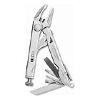Which is actually quite the tangle. The term is a landsman's one.
In the 1600s the Royal Navy was issuing rum (1/8 imp. pint per day) to sailors as a way to purify drinking water aboard long-duration naval voyages. Beer and ale sometimes supplemented the rum (or offset the water) until the RN settled on "Naval Rum" at a standard 95 proof (RN started holding Chandlers to stricter standards for buying water, too--you do not build a globe-spanning Navy by neglecting your sailors).
The official shipboard call was "Up Spirits" and typically made just before Noon.
There are two Main Braces on a ship. They run from the ends of the main Course yard back aft, usually to the very stern of the ship, before being run forward again to be tied off about even with the main mast. The are far from being the longest lines on a full-rigged ship ("royal" halyards and braces will be far longer). The longest (and largest) lines onboard a sailing ship would be the anchor rodes--hawsers of thousand foot lengths and often 36 inches or more in circumference (these lines were laid up of other lines, and "lumpy" as a result, so, easier to measure around than across).
Now, in some fairness, in many sailing ships, there was often a break in the main deck near the main mast, and this was near where the main braces returned to be belayed, which makes for a convenient place to watch over the dispensing of the grog y the Officer of the Deck.


